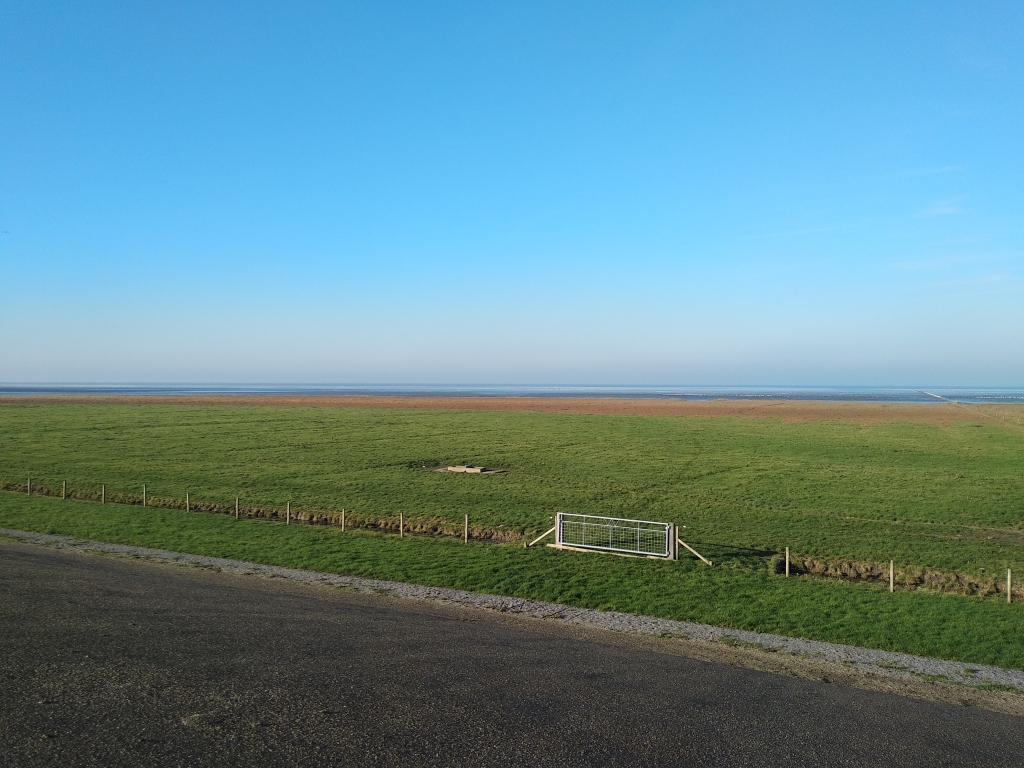Beatriz Marin-Diaz talks about her and research colleagues’ latest article, where they monitored wave run-up on Dutch dikes over the course of 3 years. Through comparing different dike locations, some fronted by salt marshes and others fronted by bare tidal flats without vegetation, results could be linked to the long-term marsh development in the area.
Introduction
Salt marshes are wetlands in coastal areas that provide multiple ecosystem services, such as habitat provisioning for many species, natural water filtration and coastal protection. Coastal protection is especially important in low lying countries like the Netherlands, that depend on dikes for their safety against flooding: marshes can reduce waves and wave run-up arriving to the dikes and potentially reduce the costs of flood protection.
However, where are such marshes found? And which features are the most important for flood protection?
Collecting field data
That marshes provide coastal protection may seem obvious, but the degree to which marshes attenuate waves and wave run-up can vary depending on different factors. Many studies about the effect of marshes on reducing run-up come from models, thus there is not a vast amount of field data available.
While the models can provide valuable insights, they are limited to the data used to calibrate them. Therefore, it is essential to continue gathering field data that can be used to validate and improve these models.

In a very simplified way, run-up can be defined as how high waves go up on beaches or, in this case, dikes. During storms, the run-up will be considerably higher. One method of obtaining the wave run-up values is by measuring the elevation of the beach wrack left on the dikes after storms, and then subtracting the sea level measured at the peak of the storm surge.

For three years, we measured the beach wrack elevations after storms. To relate to the wave run-up, we also collected data on water levels, wave heights, vegetation properties, soil elevations and wind exposure in relation to the storm’s wind direction and the presence of barrier islands.
Marshes are effective… but they are not found where we need them most
Compared to bare tidal flats, marshes were more effective in reducing run-up on the dikes, independently of the wind direction of the storm, exposure relative to the barrier islands, the grazing state of the marsh or the vegetation type. The main drivers appeared to be the foreshore elevation and marsh width; higher foreshores and wider marshes provide more protection.
However, although marshes proved to be very effective in reducing wave run-up, they do not naturally occur at locations with lower soil elevations and higher waves and run-up, where we would need more protection. The long-term analysis of this study showed that marshes expanded in areas where the adjacent tidal flats where higher, while salt marshes retreated mainly where the tidal flats in front were affected by erosion.
Management implications
The results of this study will help narrowing down some knowledge gaps about the use of marshes for coastal protection. Coauthors from the local water authority add: “This research provides answers that allow us to estimate the reduction of wave heights and run-up depending on the presence and characteristics of the salt marshes in front of the dikes. With confidence we can now distinguish between protective requirements of dike-stretches with and without salt marshes. We expect this will have a moderating influence on future reinforcement works and the costs of these stretches.”
Another relevant result for managers is that marshes that are grazed by cattle are still effective in reducing run-up, although marshes with taller vegetation may provide even more protection.
However, this doesn’t mean that all types of grazing are harmless. Intensive cattle grazing should be avoided because it can reduce biodiversity and lower the soil elevation, which is precisely one of the most important variables increasing the protective value of marshes.
Finally, getting salt marshes in locations with higher run-up, will only be possible with human interventions, such as salt marsh works or groynes. However, there is an additional dilemma: expansion of saltmarshes would be good for flood risk management, but it would also be at the expense of tidal flats that are important for wading birds.
Therefore, in places where measures to stimulate salt marsh formation are technically impossible, too expensive or undesirable because it would be at the expense of mudflats that are important for migrating birds, it may be better to opt for ‘hard engineering’ solutions such as dike strengthening.
Read the Open Access article, “Using salt marshes for coastal protection: Effective but hard to get where needed most” in Journal of Applied Ecology






